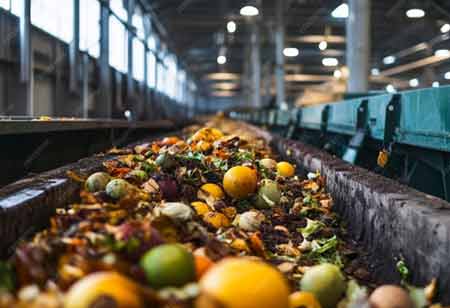THANK YOU FOR SUBSCRIBING
Be first to read the latest tech news, Industry Leader's Insights, and CIO interviews of medium and large enterprises exclusively from Food and Beverage Tech Review
How Can ATR-FTIR Help in Combating Food Fraud?
ATR-FTIR analysis technique is becoming increasingly popular in the food and beverage industry. What is the reason behind it?

By
Food and Beverages Tech Review | Tuesday, August 18, 2020
Stay ahead of the industry with exclusive feature stories on the top companies, expert insights and the latest news delivered straight to your inbox. Subscribe today.
ATR-FTIR analysis technique is becoming increasingly popular in the food and beverage industry. What is the reason behind it?
FREMONT, CA: Attenuated total reflection (ATR) is a technique of analyzing with conventional IR spectroscopy, enabling specimens to be assessed in a liquid or solid-state, without any extra steps beforehand. Fourier-transform infrared (FTIR) spectroscopy is the technique of getting an IR spectrum of either the emission or absorption of a solid, gas or liquid sample.
Why should ATR-FTIR be used in the Food Industry?
The judgment of product quality and authenticity and the display of falsely labeled foods has been a cause of grave concern for food manufacturers as well as consumers. It is complex to quantify food quality, involving many physical, biochemical, and physiological factors.
The criteria of being observant of the biochemical qualities of fresh fruits, and then determining quality comprises firmness, skin and flesh color, respiration rate, ethylene production, and the content of pigments, sugar, organic acids, volatile and phenolic compounds. The most present methods required for quantifying such parameters are costly, time-consuming, and include a large amount of physical work. Therefore, a more efficient analytical technique is necessary for determining the food samples’ quality. IR spectroscopy is an effective analytical technique that does not harm the sample and provides a fingerprint of chemicals present in the sample. The spectral peaks that show the IR beam’s absorption by the sample correspond to the vibration frequencies in-between the bonds of every individual atom in every chemical within the food.
Fourier Transform Infrared (FTIR) was built to combat the restrictions associated with the traditionally utilized dispersive instruments, therefore measuring each one of the IR frequencies synchronously.
FTIR-inspired methods are credible, efficient, easy-to-perform without any pre-treatment of samples required. Such techniques provide a consistent and straightforward method of handling a variety of food products with non-damaging analysis, with the complete sampling and analysis process, taking a few minutes from start to finish.
Earlier methods have proved that FTIR-inspired techniques, blended with other chemometric techniques, can be implemented successfully to the processes of the food industry to enable the chemical detection that can lower the food quality. Moreover, applications of these techniques include the measurement of the lard content in cakes and chocolates and within fat mixtures and adulteration inside a jam, olive oil, beverages, and meats. Besides, this method can be utilized to keep a check on the cereals’ aflatoxin levels as well as to determine the quality of the coffee.
The bottom line is that ATR-FTIR has proven itself to be beneficial as an analysis technique when it comes to verifying the origin and chemical composition of an infinite variety of food and beverages.
See Also :- Top Smart City Solution Companies

I agree We use cookies on this website to enhance your user experience. By clicking any link on this page you are giving your consent for us to set cookies. More info


However, if you would like to share the information in this article, you may use the link below:
https://www.fbtechreviewapac.com/news/how-can-atrftir-help-in-combating-food-fraud-nwid-443.html






